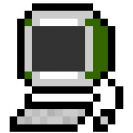Search the Community
Showing results for tags 'mapping'.
-
Hello! I started with three js and, while its fine, I'm noticing that the community for Babylon is more responsive to new people's questions. I'm just starting with Babylon JS, so I'm not sure what equivalent methods are. What I'm trying to do, eventually, is to create a heatmap, based on a series of random points, over the surface of a loaded object. Here's what I'm trying to do step by step: 1. load up a model and generate X-number of random points on its geometry. In THREE JS i used: function loadPartModel( callback ) { var modelloader = new THREE.JSONLoader(); partmodel = modelloader.parse(face); var material = new THREE.MeshPhongMaterial({ color: 0xFFFFFF, dithering: true, side: THREE.DoubleSide, vertexColors: THREE.FaceColors, overdraw: true }); partmesh = new THREE.Mesh(partmodel.geometry, material); partmesh.position.set(0, 0, 0); partmesh.receiveShadow = true; partmesh.castShadow = true; partmesh.geometry.dynamic = true; partmesh.scale.set(1, 1, 1); scene.add(partmesh); } function loadDataPoints() { var pointlist = THREE.GeometryUtils.randomPointsInGeometry(loadedmodel.geometry, 200); pointlist.forEach(function (point) { var newpoint = new THREE.Mesh( new THREE.CircleGeometry(.1, 16), new THREE.MeshBasicMaterial({ color: 0xff0000 })); newpoint.position.set(point.x, point.y, point.z); scene.add(newpoint); }); } Is there a babylon equivalent for the random point generator? 2. Each generated point becomes the center of a circle (disc, in babylon?). At render point, the object should look like it has the measles (kind of like the attached GoodCircle.PNG) . Unfortunately, this is how they end up rendering. Like disks stuck in the object instead of laying over the object(as shown in BadCircles.PNG). I think my main problem is that I'm actually just drawing and adding circles that have centers based on the random coordinates i generate. Instead I should be calculating the surface area of a circle over the model and redoing its material at that point? Anyway, at this step, I'm stuck. 3. Once I'm able to accomplish this, I believe the next step would be to get something like the attachment, heatmap.PNG. This was generated by the simpleheat.js library. The closer the circles are to each other, the 'hotter' the cluster area gets. I've been looking at several code samples that allow a user to paint a 3D object using their mouse (look at skullpaint). I need to do something similar but instead of using mouse input, using the randomly generated points. I also found this Playground by Gijs for mangomongo that kind of does what I can do now, but it uses mouse input. I need my points to be read from a file or data structure.
-
Background: I am a newbie in game development I'm creating motion sensor game Air Table Tennis on Babylon.JS in which user can control the paddle of table tennis with his/her smartphone. I am using gyroscope/rotational data of mobile in the form of Quaternion to avoid Gimble Lock and sending the data to server(nodeJS). So Gyro data is coming from mobile through node JS. Problem: So, I am using Quaternion, But I am unable to map my paddle as my device. (paddle is not exactly in the position where my mobile is currently now, although moving on x,y,z axix give me correct result). So my question is how to calibrate/Map 3D object same as my mobile device? @wighawag@RaananW@Deltakosh Sir kindly help me, I'll be very thank ful. Thanks in Advance
-
Hey there, So I've snagged onto a little problem while developing my game. I'm using Phaser with it's inbuilt support of gamepad. The axis of the controller input works in a way such that it returns 1 when held to the right and -1 when held to the left. Here's a picture to make things easier to understand. How would I map the values to degrees? Here's a visual representation of what I'd like to get. What's a formula that would allow me to do this?
- 1 reply
-
- javascript
- coding
-
(and 2 more)
Tagged with:
-

plugin Out of Kontrol - Input mapping Phaser Plugin
Kitanga Nday (NDAY Games) posted a topic in Phaser 2
(Made with love from Africa. Now, whether you buy or not, have a good day!) You can get this amazing little plugin on Gumroad for $10. Out of Kontrol - the Phaser Plugin that's actually in control of your controls. What is this? Out of Kontrol (OoK) is a key/input mapper. In other words, it allows you to have different input methods do the same thing. It cuts down on code verbosity and makes your code look neater. So yea,... that's nice too. Why do I need this? Want the WASD keys, arrow keys, and your custom placed buttons to control movement, then OoK is for you. Want to easily allow users to change the controls that you spent hours setting and testing, then OoK is for you!! Included: Minified version of Out of Kontrol. Phaser 2.6.2 + Out of Kontrol (minified) No source code :'( Manual A Basic example of all the functions found in OoK in action Developer love lol. No seriously, under all that minified and unobfuscated code is a lot of love from a dev to a dev. Alert!! We Need You!! OK, more like we need your feedback! Here's how you can help: Tell us about any issues/bugs on our issues page on GitHub. (Did you the favour of removing the source code, you can thank me later) Vote for new features on the same issues page! Also add your email to my newsletter. My emails don't bite (Disclaimer: if the email does end up biting you, I cannot be blamed). Bye!! -
Since my previous post I have been wondering on how I can map tiles myself within Phaser using the slopes plugin. If I wanted to include tiles such as "hills" or different sorts of slopes, are there any good tutorials out there that explains this? It would be very beneficial to the game I am creating. I am using 32x32 tiles with arcade physics. I've read in this file I downloaded about a "Arcade Slopes converter" which I'm unsure about. I've included the current tile sheet I created and using to test things out as well as the full code. Any help is appreciated! This is my current code for the mapping of my tiles. this.game.slopes.convertTilemapLayer(this.ground,{ 1: 'FULL', 2: 'FULL', 3: 'FULL', 4: 'FULL', 5: 'FULL', 6: 'FULL', 7: 'FULL', 8: 'FULL', 9: 'HALF_TOP', 10: 'FULL', 12: 'FULL', 13: 'HALF_BOTTOM_LEFT', 14: 'HALF_BOTTOM_RIGHT', 15: 'HALF_BOTTOM_LEFT', }); Test Game Phaser.rar
-
Hey, maybe someone solved this problem before. Lets say I have a variable from 0 to 100. How can I map it to the tint color for the sprite? I.e.: when variable is at 0 -> sprite.tint = white; [everything in between] when variable is at maximum (100) -> sprite.tint = red; Thanks!





